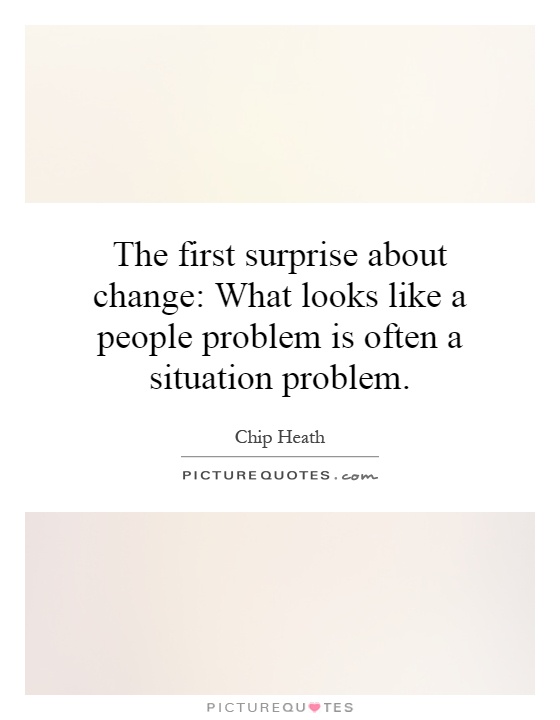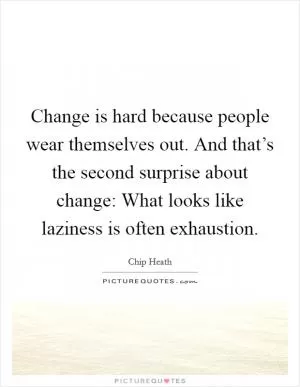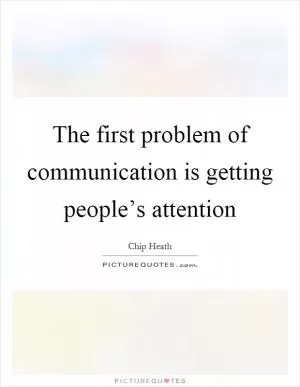The first surprise about change: What looks like a people problem is often a situation problem

The first surprise about change: What looks like a people problem is often a situation problem
In their book "Switch: How to Change Things When Change is Hard," Chip Heath and Dan Heath explore the complexities of change and offer insights into how individuals and organizations can navigate the challenges that come with it. One of the key concepts they discuss is the idea that what may initially appear to be a people problem is often actually a situation problem.When faced with a problem or obstacle, our natural tendency is to focus on the individuals involved and their behaviors. We may blame others for not being motivated enough, not working hard enough, or not being capable enough to bring about the desired change. However, Chip Heath argues that this approach is often misguided. Instead of solely focusing on the people involved, we should also consider the situation in which they are operating.
For example, if a team is struggling to meet their sales targets, it may be tempting to attribute this to a lack of motivation or skill on the part of the team members. However, upon closer examination, it may become apparent that the problem lies in the structure of the sales process, the incentives in place, or the resources available to the team. By addressing these situational factors, rather than simply blaming the individuals involved, it becomes possible to create a more conducive environment for change.
Chip Heath uses the analogy of a rider and an elephant to illustrate this concept. The rider represents our rational, analytical side, while the elephant represents our emotional, instinctual side. When trying to bring about change, it is important to not only appeal to the rider by providing logical arguments and incentives but also to address the needs and motivations of the elephant. By understanding the situational factors that influence behavior, we can create a path that is more likely to lead to successful change.












 Friendship Quotes
Friendship Quotes Love Quotes
Love Quotes Life Quotes
Life Quotes Funny Quotes
Funny Quotes Motivational Quotes
Motivational Quotes Inspirational Quotes
Inspirational Quotes